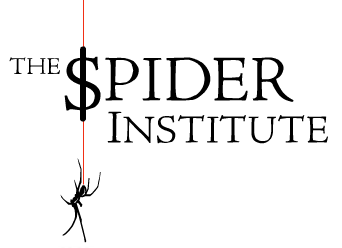Socialism in America – Part II
Last week we considered the societal and economic structure socialists would have this country adopt and reviewed the principles of the US Socialist Party.
Those principles involve the government owning everything and people living in ‘small’ communes.
In that socialist society the participants in the communes would take care of each other – and communes collectively take care of all.
This piece looks at how the U.S. has already changed to adopt some of the socialist thinking.
The sea change began during the 1930’s Great Depression and the Franklin Roosevelt’s administration(s). Adopting the Keynesian economic theory, Roosevelt tried to counter the depression with a plethora of government programs. It was during this time that the federal government was first seen as a major participant in society and its individual citizen’s economic well-being.
The Social Security Administration was born during that time. It was initially meant to assist just indigent elderly folks and the disabled and only later as a retirement income program for everyone.
The post WWII era through the 1950’s saw a pullback of federal government involvement in people’s everyday lives – returning welfare to the states.
That all changed in the early ‘60’s with President Johnson’s Great Society and his War on Poverty – which took aim at eliminating poverty in the country. That began our ‘welfare’ programs in which the federal government assumed responsibility for people’s economic well-being and education.
The numbers of people covered under those programs exploded as time and funding increased.
Medicare, health coverage for those 65 and older and disabled folks was also established in 1965.
Also born at that time Medicaid – initiated to provide funding for medical and health-related services for people with incomes at or below the poverty line.
Subsidized housing resulted in the construction of a multitude of multi-story tenement apartment houses in various cities. Federally funded food stamps and school breakfasts and lunches also became more commonplace.
The percentages of people living at or under the poverty line did not change despite the monetary largess now part of the federal government distribution of funds to poorer folks.
In 1992, candidate Bill Clinton ran for president promising to “end welfare as we know it.” In 1996, a Republican Congress passed, and President Clinton signed, a reform law that returned most control of welfare, including Medicaid, back to the states.
That all changed again with the election of President Obama in 2008. His ‘redistribute the wealth’ mantra stopped short of totally socializing medicine/health care in America, but President Obama and Congress again stepped in with major federal Medicaid funding to “help the poor.” However this time, eligibility was expanded to families with incomes over the poverty line – 1½ to 2 times over, dependent on the state.
Initially Medicaid provided health care coverage to 4 million people.
After expanding eligibility and subsidy under the Obama administration, in 2022 Medicaid provided taxpayer-funded health insurance to 85 million ‘low-income’ people.
Medicaid now pays for half of all U.S. births. In 2024 40% of all children were born out of wedlock. The total (federal and state) annual cost of Medicaid was $870 billion, with an average cost per enrollee of $7,600.
Food and shelter programs were also expanded.
This major enlargement of welfare programs resulted in an explosion of federal spending, which in turn exploded the national debt. When President Obama took the reins of Washington, the debt stood at $5T – too much then and now. When he ended his term in 2016, the debt had ballooned to nearly $20T. With no significant reductions in those programs since then, and dealing with the COVID-19 pandemic, the debt as of this writing has grown to $37T – and rising.
It’s worth noting here that the federal government’s role in health care spawned the first, for-profit hospital company in 1968. (The ‘why’ might be worth a blog.)
In addition, from a societal perspective, President Johnson’s War on Poverty began the subsidy of fatherless families. While not intended, fact is many women in those situations had/have even more children to receive increased welfare benefits – and makes the kids not having fathers even less important.
To top all this off, Congress has split the budget into two parts: discretionary and mandatory.
The mandatory part of the federal government’s budget is Social Security, Medicare and Medicaid, everything else on the welfare side, and the interest payments on the debt. Congress takes no vote on any of those pieces and simply estimates what those programs will cost with current and future people and families who qualify – and the size and cost of the national debt. This “mandatory” piece now represents 63% of the federal budget.
This is ludicrous. Social Security is going broke as people are living much longer than in 1939, meaning more is going out than what is, or will, come into the trust fund. Retirement age for younger people must be raised if Congress wants to save our government from bankruptcy.
Medicare is already broke. Fixing – reducing it – will not be easy, but Congress has a fiscal responsibility to do so.
Federal programs aimed at ‘poverty’ need to be curtailed. Something for nothing creates dependency. It flies in the face of jobs and personal independence. Socialism.
Theoretically, socialism says no one is ‘wealthy.’ “Tax the rich” until ‘equity’ is achieved.
Experience shows socialism doesn’t result in eliminating the rich and poor – it only results in raising the ruling class.
****************
Have a great and prosperous week.
Hug somebody.
References:
https://en.wikipedia.org/wiki/Medicaid
https://www.numberanalytics.com/blog/great-society-guide


